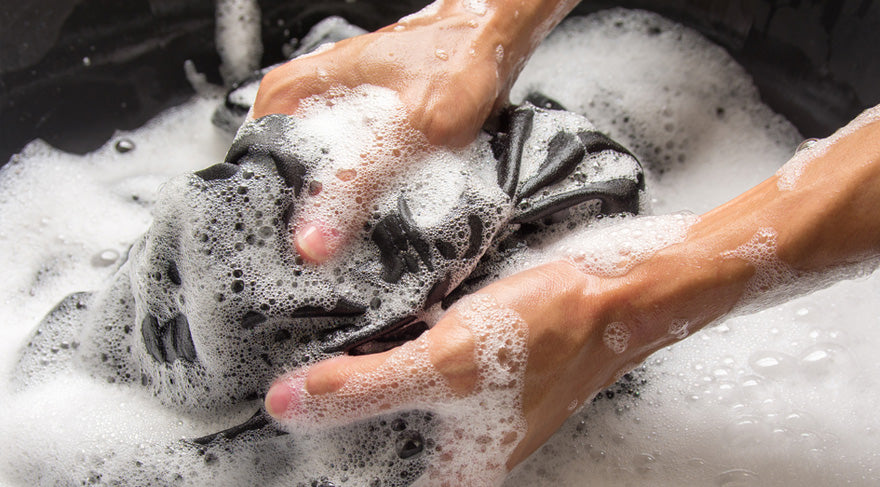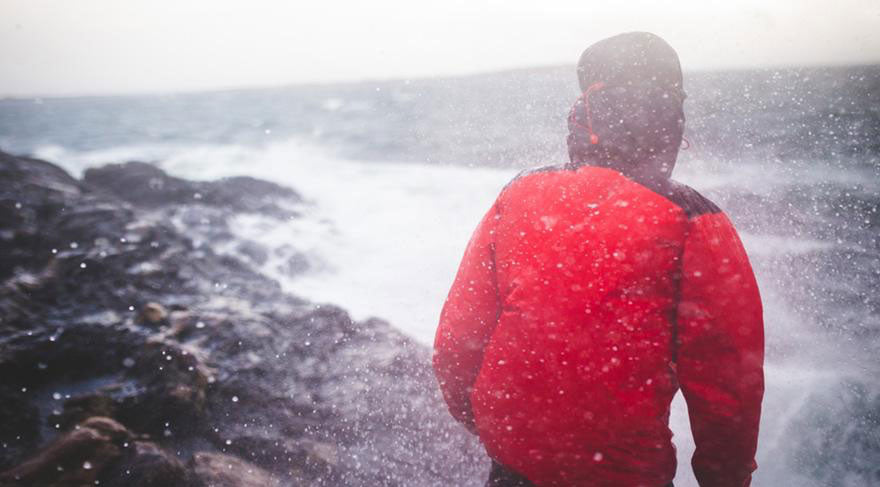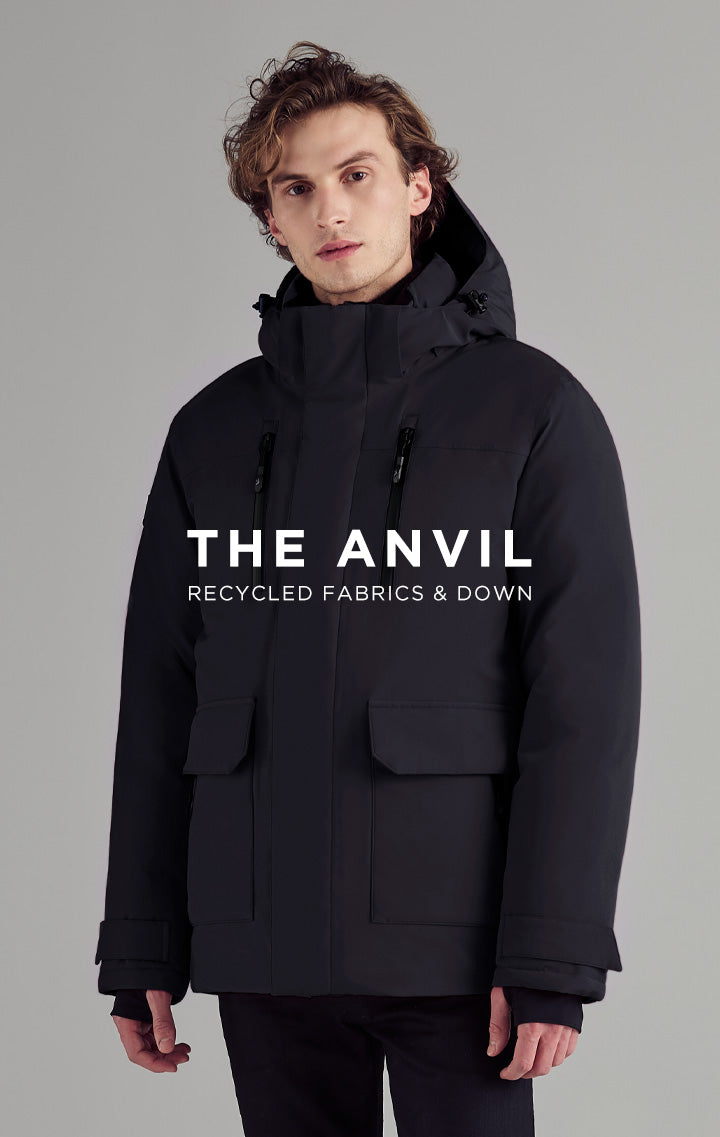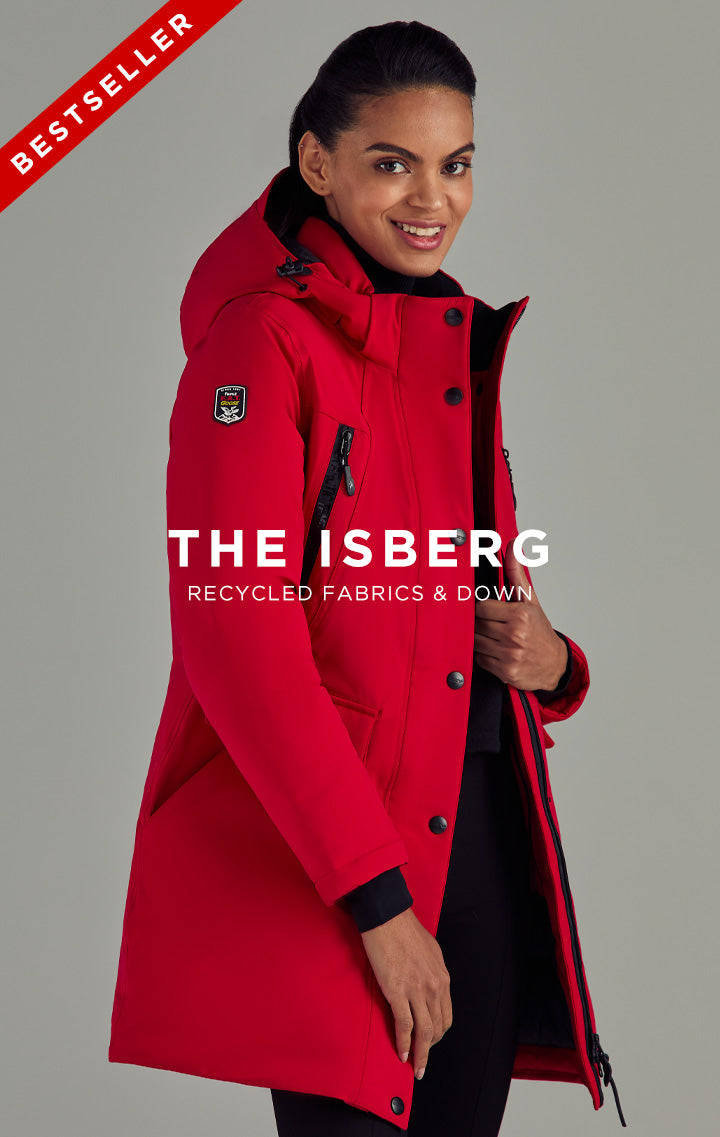Ever wonder how a waterproof jacket repels water? Three simple words: Durable Water Repellent (DWR in trade jargon). It’s a chemical compound that is applied to the outer fabric of a garment and can keep you dry as a bone in wet weather when applied properly.
In this article, we’ll discuss DWR, how it is applied to clothing, and why upkeep and reapplication are critical to the lifespan of your outerwear.
As stated above a DWR is a topical chemical coating that is made up of compounds called polymers. Once DWR is applied and bonded to the fabric, garments can become water-repellent, causing water to bead up and slide off.
A Few Facts About DWR...
- DWR affects only the exterior of a garment.
- It protects fabrics from becoming saturated and damp.
- DWR does not affect breathability.
- The performance of DWR becomes affected by dirt, grime, and oils.
- DWR needs to be reapplied to ensure fabrics remain water-repellent. This can be done at home with a spray or wash.
How DWR Is Applied to Fabrics On An Industrial Level
DWR is most commonly applied to the fabric at the factory level using two methods: spray-on, and wash-in. This means that companies either have the DWR professionally sprayed on or washed into the fabric. Both methods can be done during the construction and production of the fabric and jacket, or at home.
Pros and Cons
- Spray-on: Faster process, often easier to apply, more difficult to apply an even coating, shorter lifespan (DWR needs to be reapplied more often than wash in)
-
Wash-in: More time consuming, often more difficult to apply, applies more evenly, longer lifespan (DWR needs to be reapplied less often than spray on)
While the at-home DWR applications are totally effective in most instances, you shouldn’t expect the “do it yourself” DWR applications to last as long as the ones applied by the factory.
Learn more about Triple F.A.T. Goose, a brand with a 35 year history that has been featured in Outside, Esquire, Vogue, Elle, Men's Journal, Cosmopolitan, Robb Report, and more. All Triple F.A.T. Goose coats have a fill power rating of 675 and up. Shop the collection.
SHOP TRIPLE F.A.T. GOOSE
How To Apply DWR At Home
DWR needs to be serviced every so often to stay invigorated. Dirt, grime, and oil that accumulate on the exterior of the garment are the number one causes of DWR deterioration. So what do you do when it doesn’t repel water the way it did when you first wore it out in the rain? Simple: you need more DWR and some heat.
Easy to do at-home DWR reapplication sprays and walk-ins are readily available. All it takes to restore the fabric with water-repellent properties is a wash, reapplication spray (or both) and also a little heat (if necessary according to the application instructions).
Spray On
Products like Nikwax water repellent spray are simple to use and are excellent for feeding the garment DWR. When you feed the garment, you are providing “nourishment” (fresh DWR) to the already treated exterior. Before you spray the garment, you’ll need to take a damp cloth/towel and lightly brush off any dirt, mud, grime, or oil that is visible on the exterior. After making sure that all contaminants are off the surface, all you need to do is spray the garment’s surface fabric, thoroughly and liberally, and leave it out to air dry. This will also help the breathable membrane beneath the surface fabric become impregnated with DWR, thus ensuring the highest assurance of water-resistance. Make sure that it is completely dry before storing or taking it out in the rain again.

Wash In
Washing a garment with DWR detergent, like Nikwax TX. Direct Wash-In Waterproofing solution, is a little more detail-sensitive but will ensure that the garment is coated thoroughly with DWR. Be warned! If you use any detergent other than a specific DWR product, you are bound to ruin both the breathable and water-repellent qualities of your garment.

Follow these steps for the best outcome:
- Empty out all pockets, and turn them inside out.
- Make sure that all hook-and-loop fasteners are closed and secured, all buttons are snapped shut, all velcro strips are pressed together.
- Turn the jacket inside-out.
- Set the wash on a delicate cycle in warm water (which will activate the DWR restorative properties of the specialty detergent).
- Make sure that the garment is thoroughly rinsed before removing it from the washing machine. It is recommended to put it through a second rinse cycle to be sure that all leftover detergent has thoroughly dissipated.
Activating DWR At Home
When washing/drying the garment at home, some may say that air drying is the best method, because additional heat will affect how well the DWR adheres to the fabric. It’s true that some DWRs, like Nikwax, don’t even need drying to activate, but the product will advertise this.
However, there is always the option of machine drying; a low-heat and delicate machine wash setting. The molecules in some DWR detergents require a low amount of heat to reactivate the DWR treated fibers. After drying, it’s not a bad idea to spray your garment with DWR for superior water-resistance. Again, just make sure that it is thoroughly dried before doing so. This will add to the overall lifespan of your garment.
Knowing what durable water-repellent is, and how to properly upkeep a garment that requires DWR coating is information that will be of the utmost benefit in extending the lifespan of your garment. With correct care and maintenance, you can easily maintain a garment’s technical features, which will keep you dry the next time there’s a rain shower.





